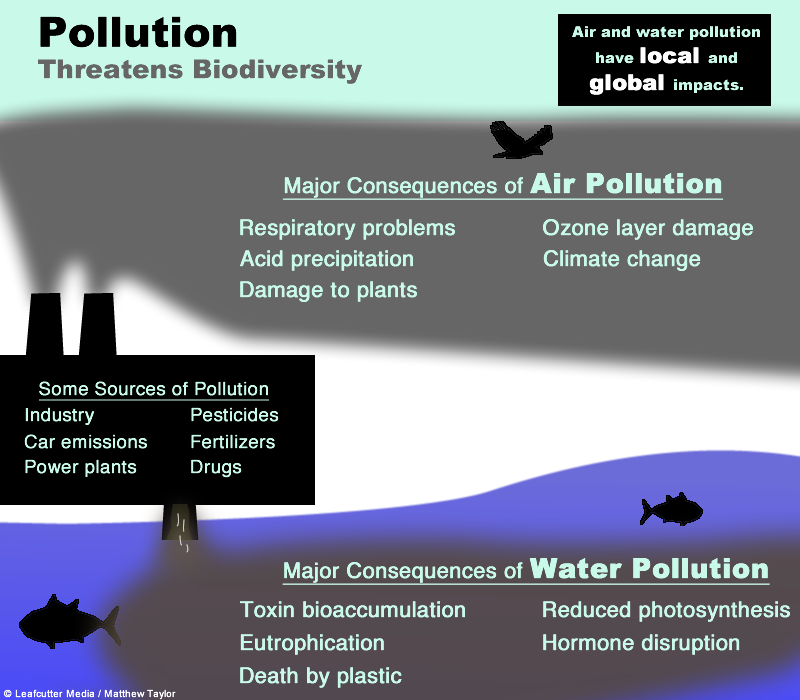How does pollution change the environment?
1 Answer
Air and water pollution change the environment in many ways. I created the graphic below to summarize some of the key sources and consequences of pollution.
Here are a few of explanations to help interpret the image below.
Bioaccumulation : the build up of toxic substances in the fat tissue of organisms in a food chain. The toxins are not easily eliminated from the fat tissue. Therefore, toxins become most concentrated in organisms at the top of the food chain. Bioaccumulation explains why tuna (top predators in the ocean) have high levels of mercury in their tissues.
Eutrophication : nutrient pollution (e.g., from fertilizers and sewage) leads to an increase in population size for algae. As the many algae die, they fall to the bottom of the body of water, where bacteria decompose them. Bacteria populations therefore increase as well. The many respiring bacteria respire, using the oxygen in the water. Fish and other aquatic organisms suffocate from the lack of oxygen.
Hormone disruption: some water pollutants are hormone mimics, and therefore interrupt normal hormone function in organisms.
Death by plastic: Animals may mistake plastic in the water for food; they choke on it or it becomes lodged in their gut, leading to death. Other animals get caught in plastic. The Great Pacific Garbage Patch reveals how much plastic pollution makes it into the water.



